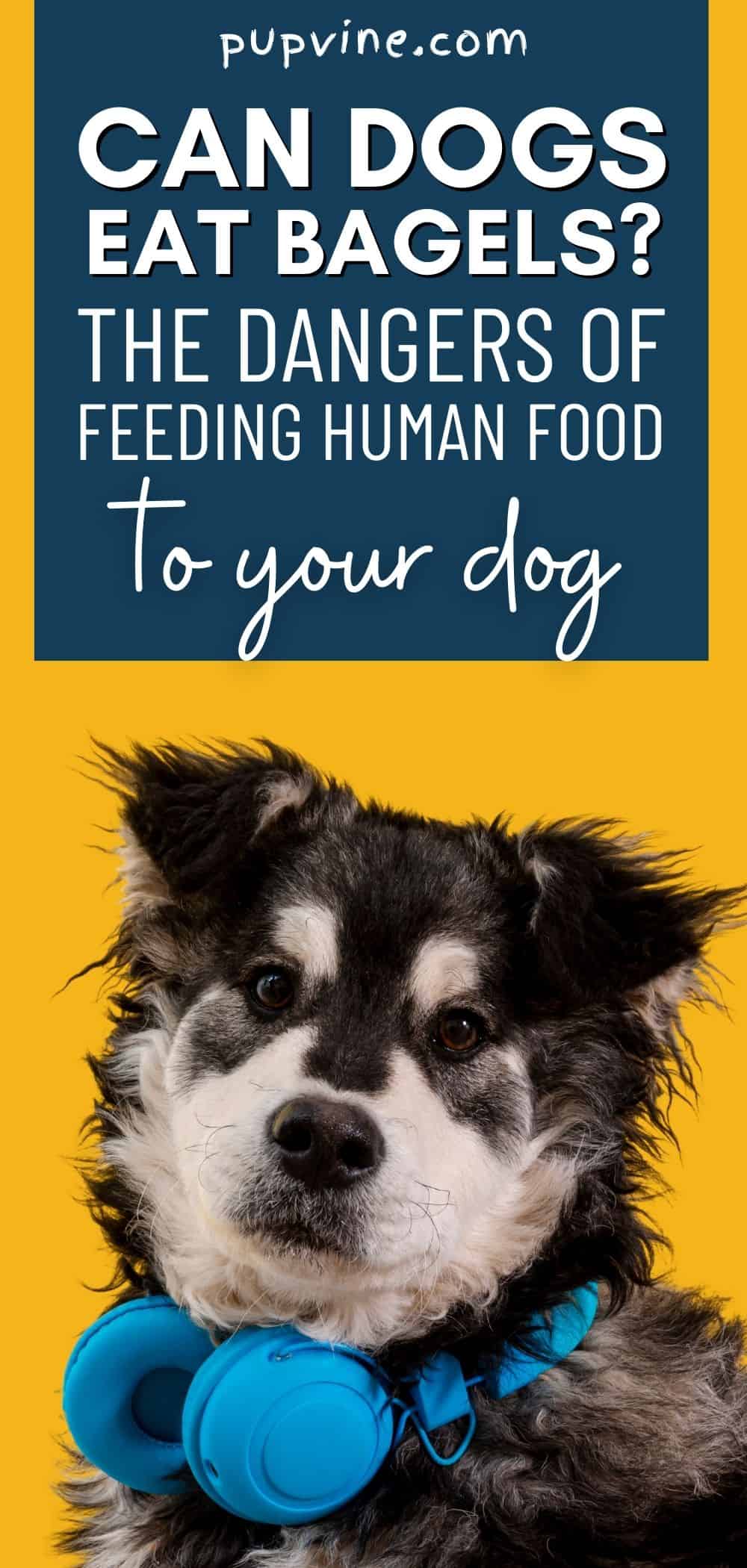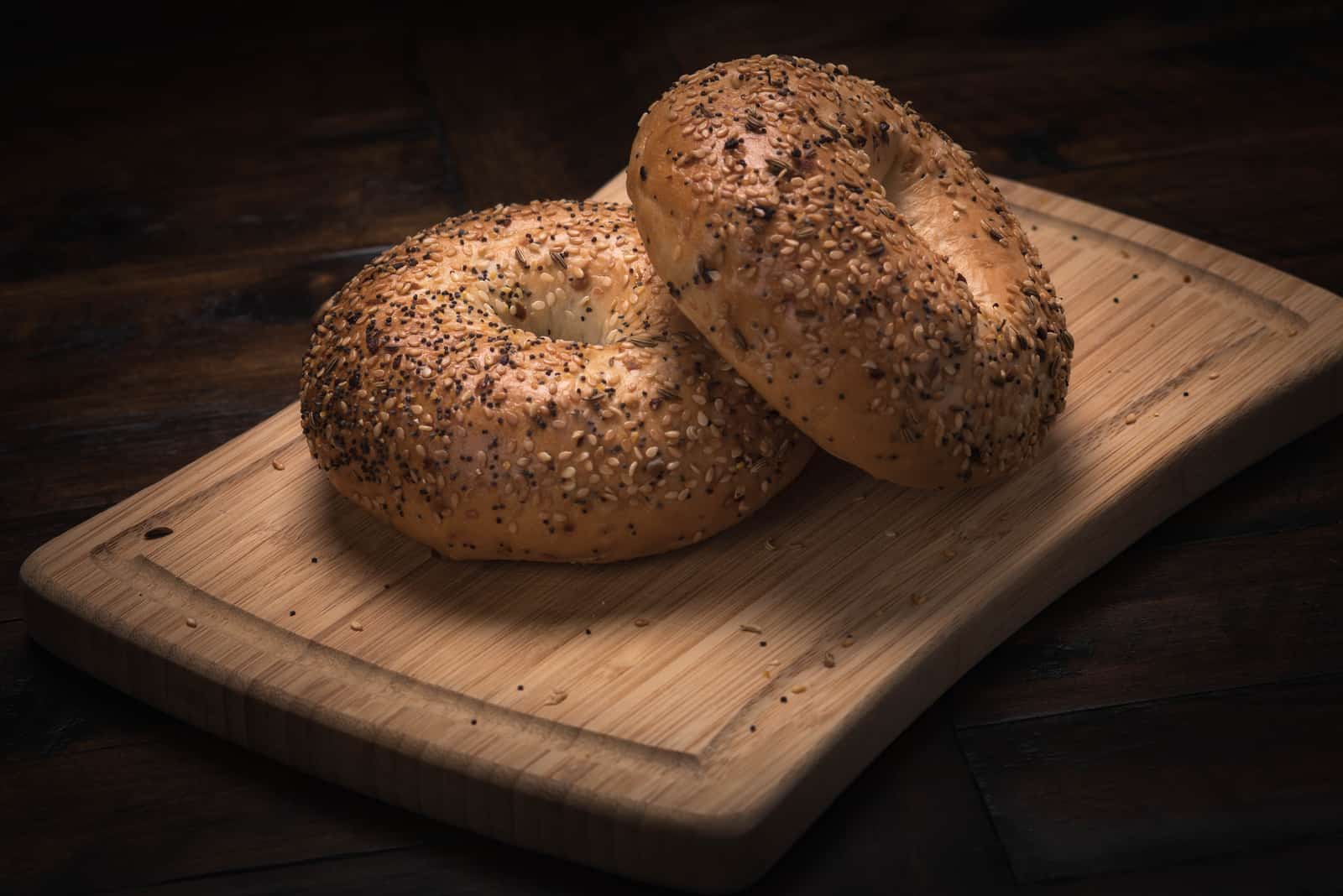From their origins among the Jewish communities of Poland, the humble bagel has risen to become popular worldwide, where a whole range of different varieties have been developed.
They are especially loved in the Western world, with America (and New York, in particular) being amongst the most prolific bagel-eaters.
As you prepare your snack or when you sit down to enjoy it, your dog looks on in anticipation. You are tempted to tear off a chunk and toss it towards those eager, drooling jaws. But is this wise?
‘Can my dog eat bagels?’ You might ask. As with all ‘human food,’ there may be dangers lurking that you just aren’t aware of.
What Are Bagels?
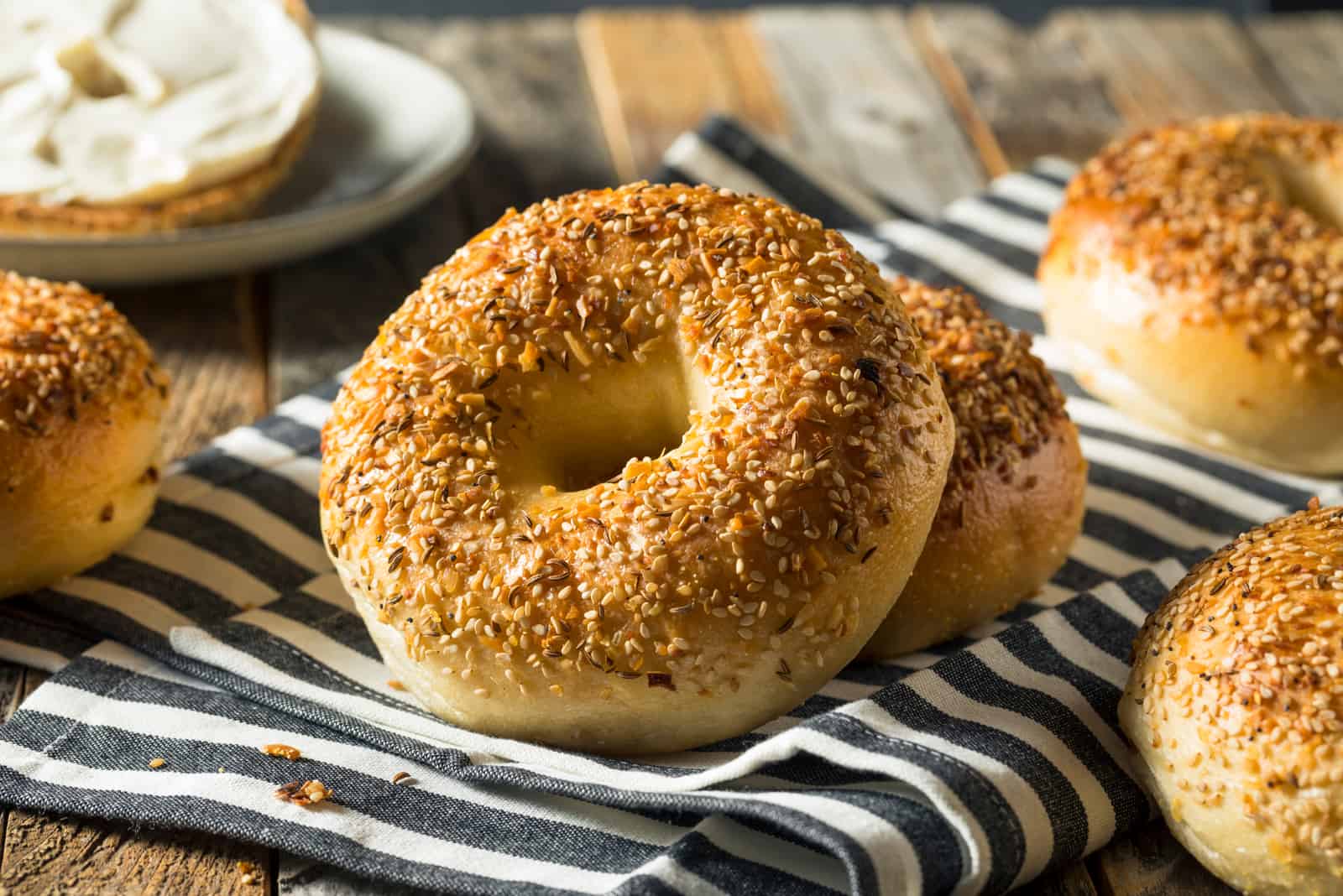
Most people will know this, but just to be clear: a bagel is a round bread roll with a hole in the center.
Although appearances can differ, they are usually brown and have a glazed sheen to them. When you bite into it, there’s a satisfying, firm chewiness to the bread.
The glazed appearance is achieved through the process of boiling the dough for between 60–90 seconds before baking.
The water contains an agent such as lye (known as caustic soda or sodium hydroxide), barley malt syrup, honey, or baking soda.
This process is what gives the bread its distinctive look, flavor, and chewiness.
Although spellings vary by country (beigel/baygal and so on), the root word originates from the German beugel, meaning bracelet, named for its ring-like appearance.
So, Are They Bad For Dogs?

Photo from: @angel.shichi
Before we answer this, we should first accept that they aren’t exactly healthy for humans! Let’s face it. We love to snack.
A breakfast or brunchtime bagel really hits the spot, especially when it’s packed with our favorite filler.
As part of a (mostly) healthy diet, we can be forgiven for indulging. But this delicious bread is not famed for its health benefits and nutritional value.
In fairness, a lot of this depends on the actual bagel itself. Or, more accurately, who made it.
There are so many different brands, each with their own processes and ingredients, that it is impossible to say for certain without examining each one.
Then there’s the size. In recent years, they’ve become ‘super-sized,’ with some bagels double the size they were two decades ago.
This means that, in some cases, a bagel might contain around 600 calories or more — not including whatever you choose to put on top of it!
Refined carbs are a problem, too, contributing to an increased risk of diabetes and other chronic conditions.
If eaten in moderation, this is all well and good. Nobody is going to deny you your occasional bagel. But for our furry friends, we need to exercise a little more caution.
Hidden Dangers Of Human Food
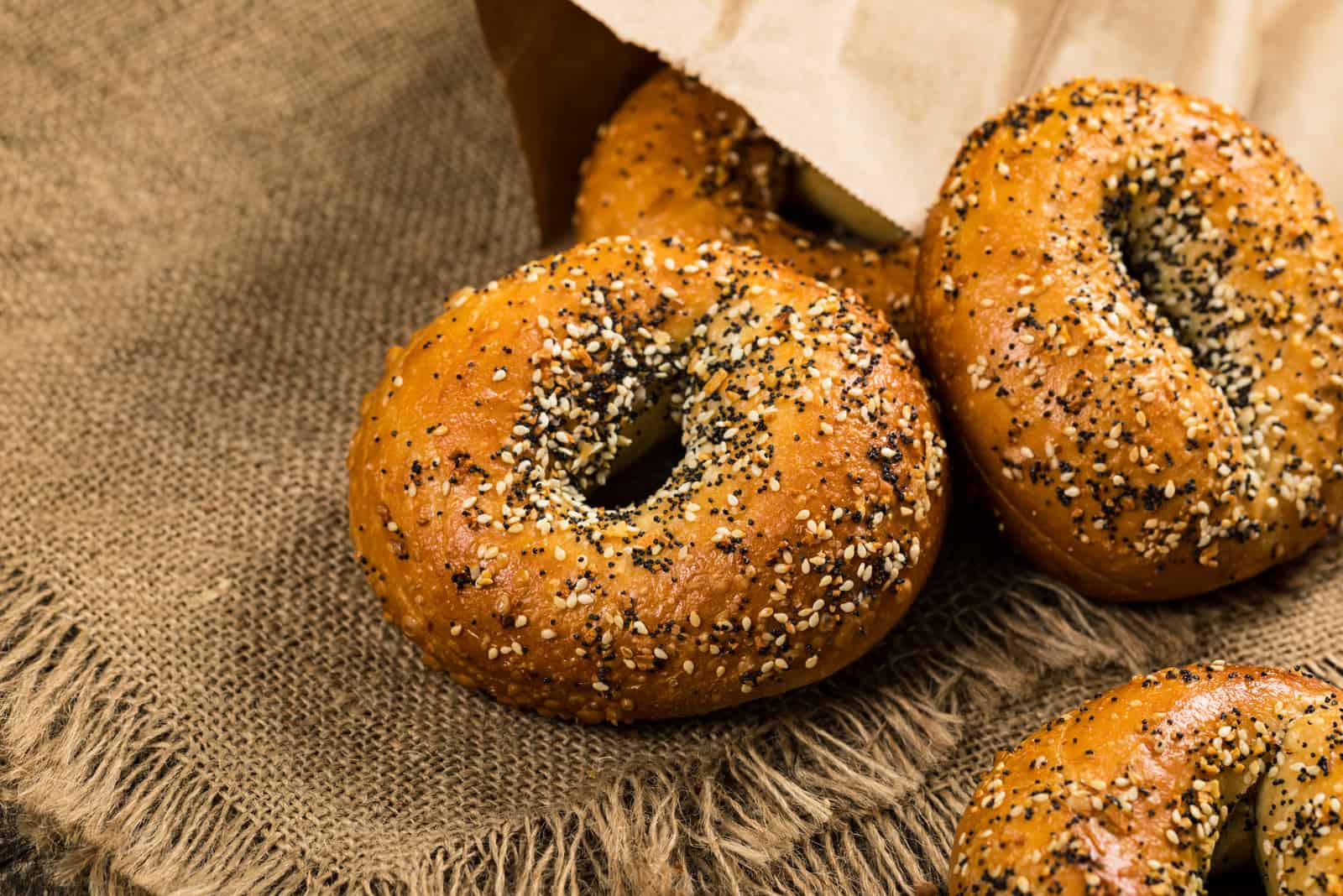
We’ve seen just how bad for our own health they can be, and the effect on dogs is even worse.
Even though a plain bagel does have some nutritional value, with trace minerals (iron, zinc, copper, manganese, and so on) and can even be enriched with vitamins in some cases, the high levels of carbohydrate and gluten make them unsuitable for dogs.
Gluten and carbs will contribute to sluggishness, weight gain, and obesity, which in turn leads to other issues, including heart problems.
Gluten intolerance can cause bloating, gastro-intestinal issues, itchy skin, and even ear infections.
And all this is before we’ve explored the added ingredients, toppings, and fillers!
Some varieties are sweetened using a number of different ingredients. Take a look at what might be hidden inside the average bagel:
• Salt
• Sugar
• High fructose corn syrup
• Molasses
• Cinnamon
• Sucralose
• Canola oil
• Mustard
• Mustard seeds
• Lemon juice
• Poppy seeds
• Sesame seeds
• Garlic/onion powder
• Dried minced garlic
• Tomato paste
The list goes on! None of these ingredients should ever form a regular part of a dog’s diet. While some should be used in moderation, others should be completely avoided.
Too much salt, for example, can cause sodium ion poisoning. Poppy seeds are toxic to dogs, with no safe amount recommended.
Garlic and onion powder are likewise considered toxic, despite claims to the contrary (very small amounts of fresh garlic may offer health benefits). Lemon juice contains citric acid, which irritates a dog’s stomach.
Mustard and mustard seeds could cause gastroenteritis. Tomato paste is highly processed, usually containing additives, including salt.
Canola oil (and other types of processed oil) are not recommended as part of a healthy diet for dogs.
Sugar, high fructose corn syrup, and molasses are never considered healthy, whatever advice you may have been given in the past or seen on the internet. They greatly increase the risk of obesity and diabetes.
The only ingredient from the above list (though there are countless others we have missed!) that we haven’t examined is cinnamon.
The main danger here is if it is in powder form sprinkled on top, where your poor pooch may get a noseful that will irritate the nasal lining.
What About Toppings And Fillers?
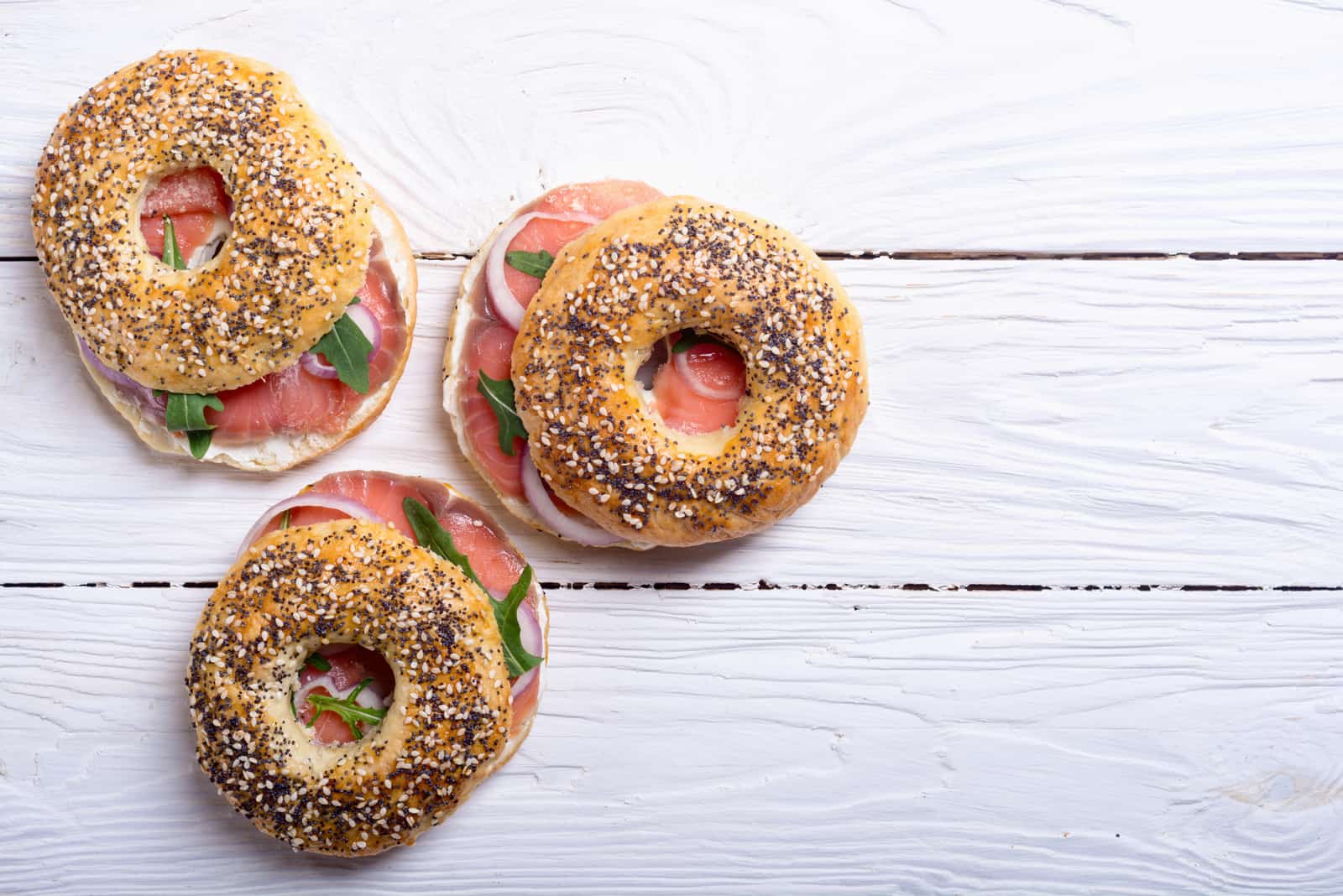
Having seen what dangers lurk within the ingredients, we now turn our attention to the stuff you use to make your snack more interesting and satisfying.
One favorite is peanut butter, which must be safe, right? Well, that depends. As long as you don’t give your dog too much, and check the ingredients first.
If it contains a sweetener called xylitol, then you must never feed it to your dog. Xylitol is highly toxic to dogs and may even be fatal.
What about cream cheese, another well-loved filler? This is okay for dogs in very small quantities. Dogs lack the lactase in their systems to process dairy foods properly. Ingesting too much may lead to diarrhea and vomiting. The same warning applies to sour cream.
Also, a lot of cheeses are high in fat, running the risk of obesity problems.
In fact, very few of the delicious things we stuff our bagels with are okay for dogs to consume.
Here are a few examples, which, while they might make your mouth water, may be harmful to your dog:
• Blueberries — This one only just makes the list. While being packed with goodness, the high levels of sugar may cause problems in the long term. Used sparingly, they should be fine.
• Bacon — Fried and salty! A big NO to this filler for dogs.
• Salt beef — More salt. You need to keep your furry buddy’s sodium levels as normal as possible.
• Mustard — As mentioned above, mustard can cause gastroenteritis.
• Grapes (and raisins or prunes) — This is an important one; grapes are seriously bad for your dog’s health. Avoid giving them anything grape related!
• Pickles — Not so much the pickles, which many dogs won’t enjoy anyway because of the sourness, but mostly because of the brine they are soaked in.
• Onion — All members of the allium family are bad news for dogs. Whether sliced and raw or fried and crispy across the top of a snack, onions will wreak havoc with your dog’s digestion. It will also destroy red blood cells, leaving them prone to problems such as anemia, liver damage, and dermatitis.
• Smoked salmon — High in salt, and the smoking process may not kill parasites and bacteria. Even unsmoked and properly cooked, it is no good if packed in oil or brine. Also, small bones may present a choking hazard.
• Mushrooms — Not so much the mushrooms themselves, but the way we cook them. Though you might see dire warnings elsewhere about mushrooms being toxic to dogs, store-bought mushrooms are generally safe. It’s the salt, garlic powder, and sauces we cook them in that could cause our pets to suffer from gastric problems.
• Jam/jelly/marmalade — Again, you’ll see sites that claim these foods are okay for dogs because fruit is good for you, right? Well, not when the main ingredient is sugar!
• Chocolate spread — For obvious reasons, but also because of the high sugar content or artificial sweetener (especially xylitol).
• Marmite/Bovril — In tiny amounts, this will be ‘safe,’ but the concentrated salt content rules them out as a regular addition to any dog’s diet.
This is by no means an exhaustive list, but it does illustrate the point very well that there are hidden dangers when it comes to sharing our food with our dogs.
Which Human Foods Are Safe For My Dog, Then?
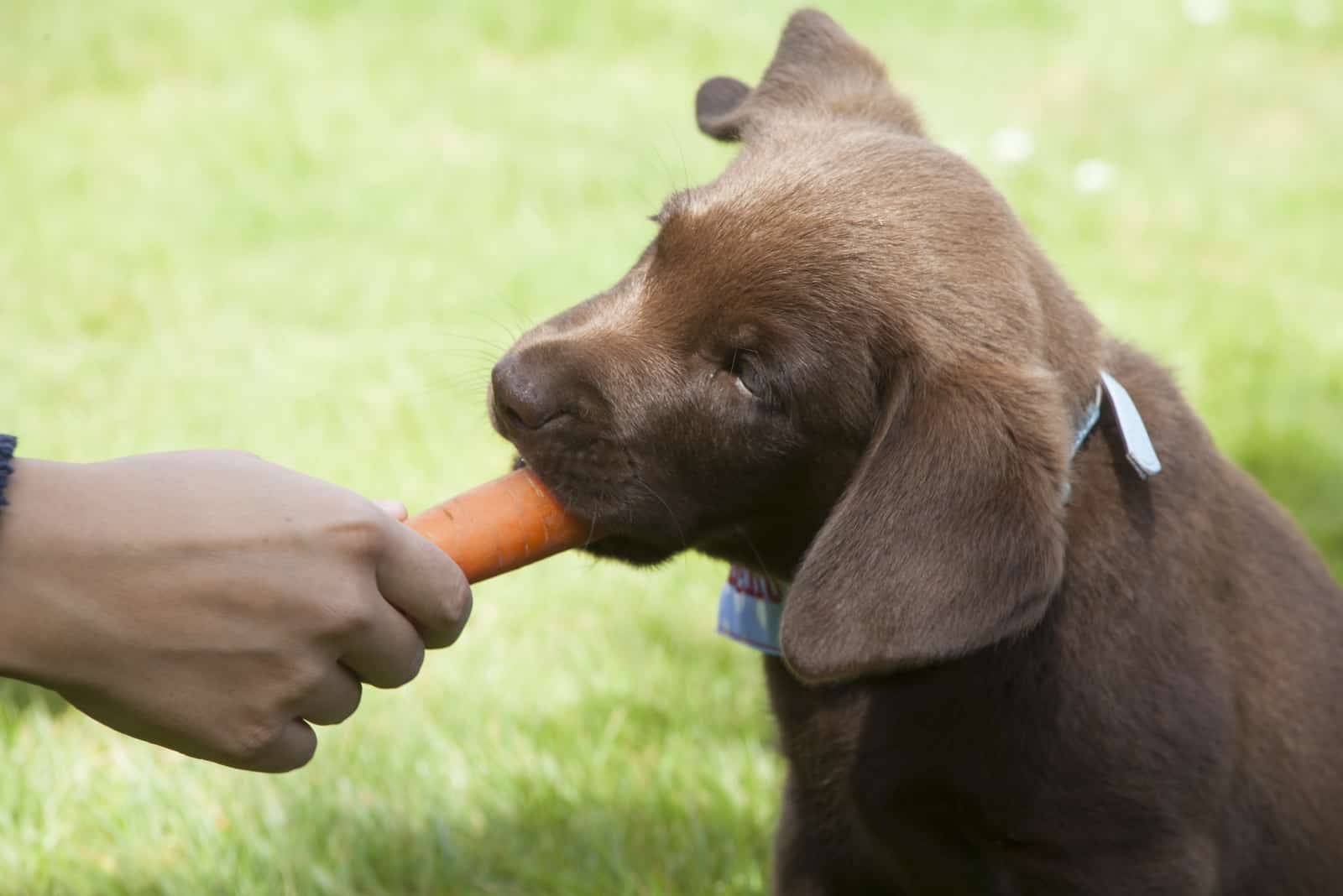
To be honest, very few ‘people foods’ are either safe or healthy for dogs to eat. At least, they should never form a regular part of their diet. There are healthy treats out there, and these would be the best alternative.
Yes, it’s difficult when your beloved fur baby watches as you tuck into your delicious meal. You want to break off a piece or fill their bowl with it, just to see their joy as they devour it.
Their tails wag frantically in appreciation, and they shower you with affection.
However, we have to ask whether it’s worth risking their health.
This article has focussed on everything bagel, including the toppings and fillers that we know and love. But even the plain bread roll itself isn’t good for your dog. Bread, in general, offers little in the way of health benefits.
Having said this, the odd nibble once in a while shouldn’t harm them. Just don’t let it become a habit!
On the other hand, should your furry friend take it upon themselves to munch their way through an entire bag of poppy seed bagels, then be prepared for some unpleasant symptoms.
It may also be a good idea to contact your veterinarian, just in case.
As for human foods that are safe for dogs, there really is no substitute for regular dog food. As boring as it may seem to us, it carries all the nutrition they need to keep them healthy.
There are, however, certain foods that you can safely add to their diet that will be good for them. Admittedly, it can be confusing, given that online advice is often contradictory!
Use common sense and make a balanced judgment based on your research and how well you know your own pet.
As a suggestion, you can feed your dogs carrot (raw or cooked), apple (minus the seeds!), green beans, asparagus (cooked, not raw), and spinach, to name a few.
What Have We Learned From All This?
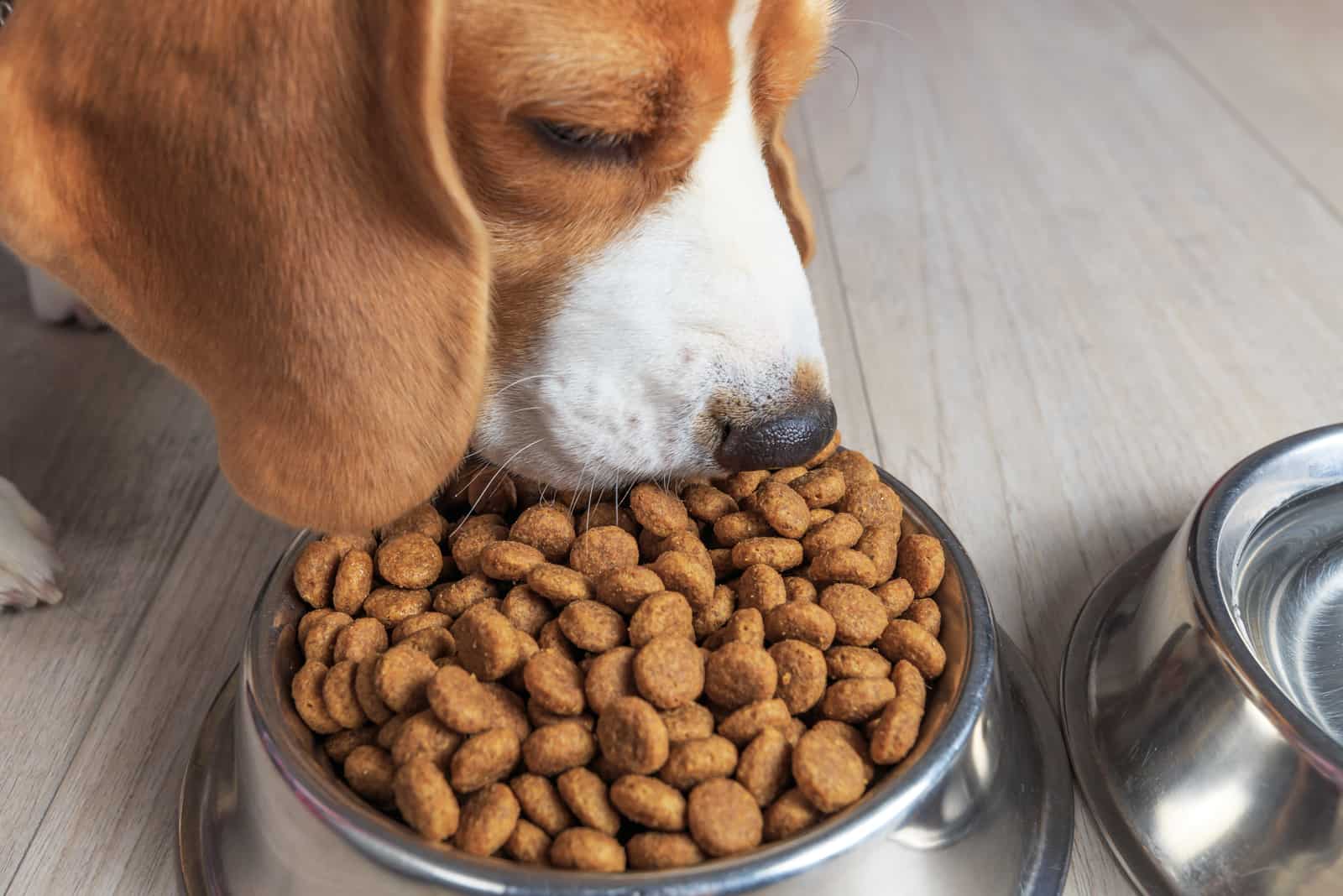
Having reached this far, you may well have become alarmed at the list of foods that can harm your precious pooch! Don’t be too worried, as for most of these, it would take a lot to actually do any real damage.
The exceptions to this are grapes, chocolate, and xylitol, which really should be avoided as much as possible.
Hopefully, you will have found the answer to whether it is safe to feed your dog bagels.
To drive this point home, we’ll repeat it here: bagels are low in nutrition, contain gluten and carbs that can cause your dog to bloat, as well as feel slow.
Some brands pack their products with salt, sugar, sweeteners, and other undesirable additives, as well as being sprinkled with poppy seeds, onion, or other harmful ingredients.
Then there are all those lovely things we stuff them with. Very few of these are safe for our dogs to consume, with the most likely result being a seriously upset stomach.
Some carry the risk of making our pets very ill, with the real possibility of proving fatal.
In the end, it is safer to avoid sharing these snacks with our dogs. Even if they don’t show any immediate effects, the damage could build over time.
Obesity is common in older dogs, so why not limit the chances of this by sticking to a healthy diet while they are in their prime?
We show our love to our furry pals in many ways. And one of the best ways, as hard as it can be at times, is through not giving in to their begging and tossing them scraps of our food.
A healthy diet boosts their chances of a long life.
